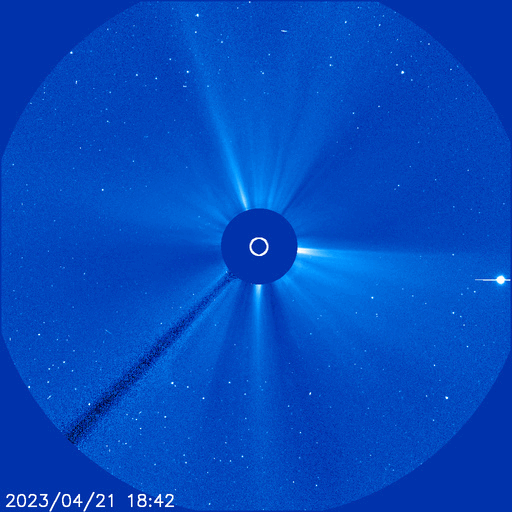NASA Studies Help Understand and Predict Solar Storms
Recent research by NASA sheds light on the unexpected intensity of a solar storm that hit Earth in April 2023. Scientists are using heliophysics missions to analyze such storms and improve predictions for future solar eruptions.

An unexpectedly strong solar storm hit Earth on April 23, 2023, causing auroras as far south as Texas. The storm was triggered by a coronal mass ejection (CME) from the Sun. Despite initial expectations of a minor impact, the storm turned out to be severe.
Using data from NASA missions, scientists are studying such storms to improve predictions of future solar eruptions and their effects on Earth.
The storm's intensity was attributed to the CME's orientation relative to Earth. A large coronal hole near the CME's origin accelerated the solar wind, deflecting the CME towards Earth and intensifying the storm.
NASA's GOLD mission observed a cooling effect in Earth's middle thermosphere after the storm, impacting satellite orbits and space debris trajectories.
Scientists are using machine learning to predict geoeffective CMEs. The GeoCME model, trained on NASA/ESA SOHO spacecraft data, showed high accuracy in predicting geomagnetic storms.
During a severe storm in May 2024, NASA's STEREO-A spacecraft provided advanced warning by measuring CMEs directly, offering insights into predicting storm strength.
According to the source: NASA Science (.gov).
What's Your Reaction?
 Like
0
Like
0
 Dislike
0
Dislike
0
 Love
0
Love
0
 Funny
0
Funny
0
 Angry
0
Angry
0
 Sad
0
Sad
0
 Wow
0
Wow
0

























































































































































